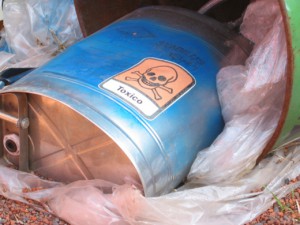 It’s no secret that there is a ton of waste in the healthcare industry today. Did you know, however, that one of the biggest sources of waste is, er… waste? Infectious waste is a common byproduct of health care, yet many providers do not dispose of it properly. This leads to a two-fold problem: regular waste disposed of as infectious waste (which costs the provider a lot) and infectious waste disposed of as regular waste (which is dangerous to the environment and to humans).
It’s no secret that there is a ton of waste in the healthcare industry today. Did you know, however, that one of the biggest sources of waste is, er… waste? Infectious waste is a common byproduct of health care, yet many providers do not dispose of it properly. This leads to a two-fold problem: regular waste disposed of as infectious waste (which costs the provider a lot) and infectious waste disposed of as regular waste (which is dangerous to the environment and to humans).
What Is Infectious Waste?
By definition, infectious waste (also known as biomedical waste) includes human and animal materials contaminated by blood or bodily fluids that carry the potential to contain the disease. Furthermore, these materials are classified as infectious or not depending on if they are “saturated, pourable, droppable, or flakeable.”
Harm from Biohazardous Materials
Infectious waste has the potential to be extremely dangerous. Imagine all of the potential hazards lurking in one of the red bins located in just one hospital emergency room. From needles to scalpels to blood-soaked gauze, those are hazardous little boxes.
Potential hazards associated with this waste include:
- Radiation burns
- Injuries from sharp objects such as needles
- Poisoning and pollution via release of drugs and other pharmaceutical products
- Poisoning and pollution via wastewater and pollutants produced when infectious waste is incinerated
How Big of a Problem is Biomedical Waste?
The World Health Organization estimates that 80% of healthcare-generated waste is the regular waste and the other 20% is hazardous waste. However, of that 20%, only 15% is the actual infectious waste. The problem: studies show that 50% of what is disposed of as infectious waste is actually general waste. It costs about $6 more per pound to safely dispose of infectious waste compared to regular waste. That is a HUGE unnecessary added cost for healthcare providers. Guess who that cost gets passed onto? You!
Why The Inefficiency?
There are several problems that lead to the failure of the healthcare industry, in general, to properly dispose of infectious waste. This includes:
- Lack of awareness about the potential health hazards of infectious waste
- Lack of proper training for healthcare workers
- Insufficient financial resources to properly manage infectious waste
- Many countries lack regulations for infectious waste or do not enforce them
How To Solve The Problem
As with many problems plaguing society, education is the key. Healthcare workers must be educated on safe handling of infectious waste including a clear understanding of what infectious waste actually is. Healthcare institutions must develop and execute waste management protocols that meet all government guidelines and ensure that those protocols are carried out. It is a problem that is going to require long-term solutions and will certainly not be solved overnight.
Frog Hauling is aware of this and many waste management problems that face America today. By providing cost-effective, convenient roll-off dumpsters for our clients, we are doing our part each day to make the world a better place.
Give us a call today to make your home or business a better place by eliminating unwanted junk and garbage! (614) 258-FROG.


